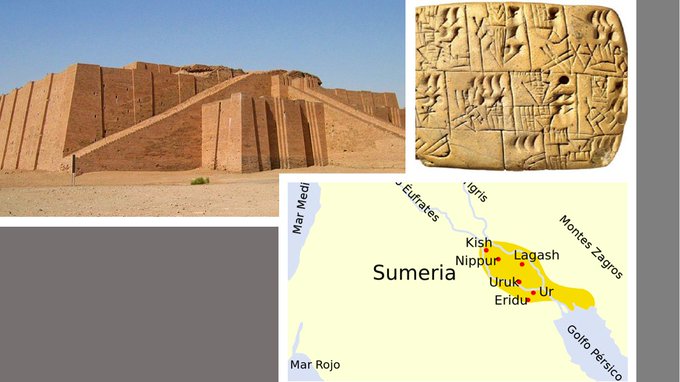Randall Wray
The Nature of Money: A System of Credits and Debits
https://www.fields.utoronto.ca/programs/scientific/13-14/newthinking/Wray.pdf
(…)
Alternative: Modern Money
• Use of currency and value of M are based on the power of the issuing authority, not on intrinsic value.
• State played central role in evolution of M.
• From beginning monetary system mobilized resources
• One Nation, One Currency Rule
• Separate currencies not a coincidence. Tied up with sovereign power, political independence, fiscal authority.
• TAXES DRIVE MONEY:
• State chooses money of account, imposes obligation denominated in that unit, issues currency denominated in that unit, and accepts its own currency in payment of the obligations
(…)
How Government Spends its Own Currency: Keystrokes
• Spending –> credits
• Government credits bank’s reserves; bank credits account of recipient
• Taxes –> debits
• Government debits bank’s reserves; bank debits account of taxpayer
• Deficits –> net credits
• Government net credits bank’s reserves; bank net credits account of recipient
(…)
Modern Money: Fiscal Policy
• Modern govt spends by crediting bank accounts, and reserves of those banks
• Fed and special banks help facilitate process
• Sovereign govt can “afford” to buy anything for sale in its currency
• Taxes by debiting bank accts
• Net credits –> deficits –> net financial assets
• Govt does not, cannot “borrow” its own currency
(…)
Neil Wilson
It’s Just Debits and Credits
https://new-wayland.com/blog/its-just-debits-and-credits/
“When using bookkeeping tools to do stock/flow analysis, it’s important to remember that we are just doing debits and credits and summing them up into stocks of debits and credits. We are using the tools of journals and balance sheets to do economic analysis.
(—)
When we use balance sheets to illustrate points in MMT analysis, it’s important to remember that we are using bookkeeping tools to do stock/flow analysis of a currency area, not drawing up a set of accounts.
Standard accounting is designed to report on an entity to a set of owners, and there is an ever changing set of standards that try and ensure that represents a ‘true and fair view’ of the entity from the point of view of the owners. That leads to a set of biases.
The report is in a reporting currency, which means that anything held by the entity in a different denomination is converted into the reporting currency and reported as though it was held in the reporting currency. Those have to be removed to do currency area analysis or you introduce fixed exchange rate thinking by the back door. In a floating rate system entities sit in multiple currency areas. When MMT analysis talks about an entity, it will mostly be one of those currency area subsets of the entity it is talking about, not the entire entity.
The reports can have a geographical boundary, often with the reporting boundary around a country’s borders. However in a free capital floating exchange rate system many entities who hold a denomination sit outside that geographical area. The Norwegian Pension Fund Global is part of the sterling currency area for example. You have to collect those and add them back in to get a view of the currency area, otherwise again you’ll introduce fixed exchange rate artefacts into the analysis.
When you are reporting to a set of owners you want to decide what is owed to third parties and what is owed to (i.e. owned by) the owners. This leads to the traditional split between ‘liability’ and ‘capital/equity’ and a whole mountain of argument about how to do that, all of which is fundamentally arbitrary. (See the bank regulatory view and accounting view of a fixed term preference share for example – which shows the tension between the ‘regulator’ view and the ‘owner’ view)
None of that really applies when you’re doing stock/flow analysis. We have “Assets” and we have “Liabilities” and that’s it. If you prefer, call them “Stock of Debits” and “Stock of Credits”. All that matters is that the stocks match, and they sum to zero, and that any flow journals you apply maintain that position. Then you know you haven’t missed anything.
To do any reasonable analysis, when flows are expected to flow is the key and that needs to be granular and targeted at the particular analysis being undertaken rather than shoehorning into a maturity profile that has more to do with assessing the solvency of an entity than the structure of an economy.
Standard accounts include ‘real assets’, again valued in the reporting currency. There’s a couple of effects of that. The first is to homogenize heterogenous capital assets and make them seem interchangeable (cows and helicopters both end up described as a quantity of a denomination), which they are not as the Capital Debates explained, and the second is that to have Net Worth you have to include the real assets. However when we are doing stock/flow analysis in Modern Monetary Theory (the clue’s in the name) we generally concentrate on the financial subset of the whole balance sheet. Therefore the balancing item on an MMT stock/flow analysis is just a Balancing Liability (or Balancing Stock of Credits if you prefer), not Net Worth as we see in the National Accounts.
It’s important to avoid a “firm analogy” fallacy that is almost as damaging as the “household analogy” fallacy. Currency zones are neither households nor firms, and should not be analysed as such.”





